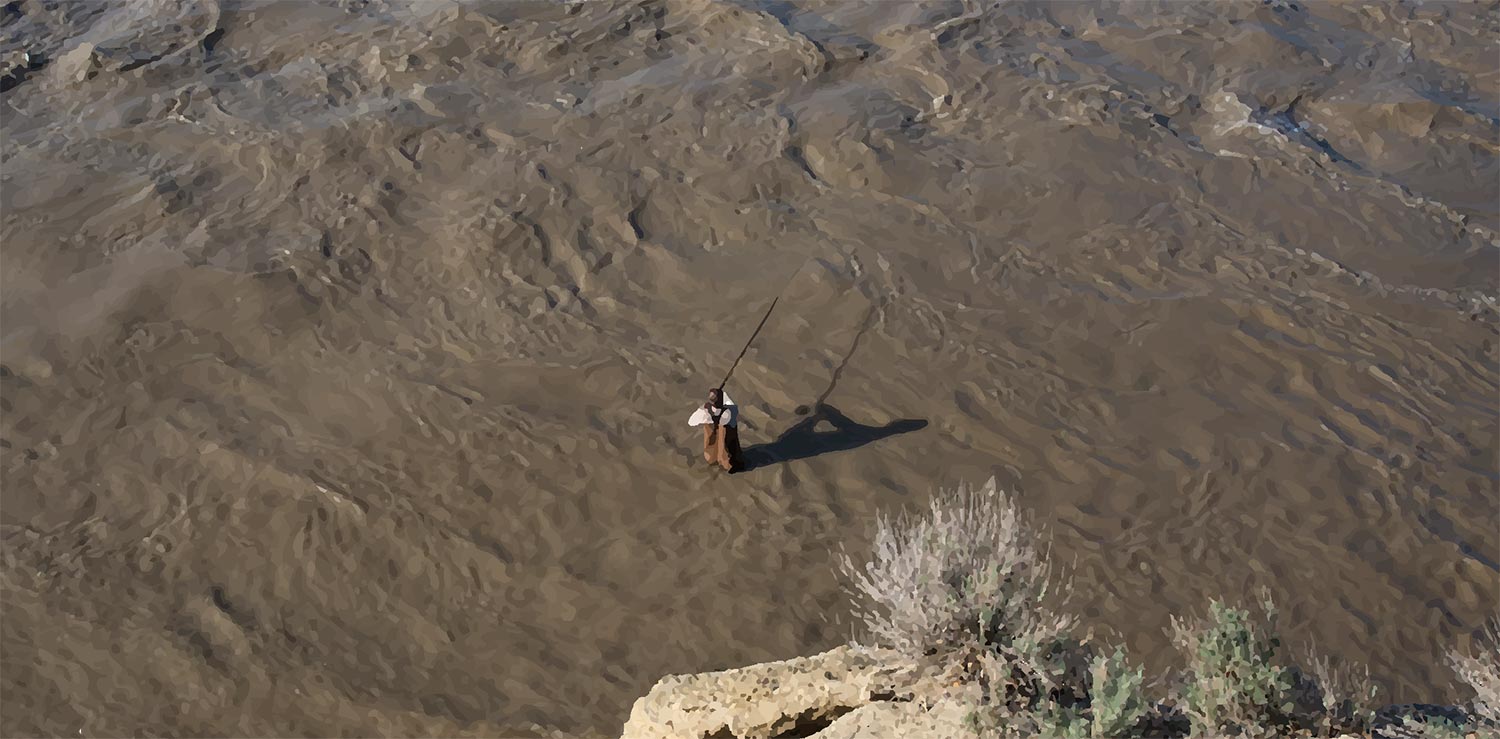Paddlefish Caviar Conservation: A Model for More Sustainable Fishing

From "Hooking the Dinosaur of Fish":
"GLENDIVE, Montana — Fishing here conjures images of waders and featherweight flies landing softly on lazy rivers, an irresistible lure for the one- or two-pound trout swimming beneath.
Catching a giant paddlefish weighing 50 or 100 pounds is an altogether different pursuit. And in an unusual twist, the end result is a bounty of an unusual delicacy: roe sold around the country as caviar.
“It winds up on cruise ships, it winds up in restaurants, it winds up everywhere,” said Dennis Scarnecchia, a professor of fisheries at the University of Idaho. He supervises paddlefish caviar programs in Montana, North Dakota and Oklahoma, the proceeds of which are funneled into research and monitoring of these freshwater leviathans. He considers the programs to be a model for sustainable recreational fishing.”
The catching of paddlefish (Polyodon spathula), although highly regulated by state and federal laws, can be quite a lucrative endeavor for small-town fishermen. In addition to selling the mild-flavored, white colored meat harvested from the species, a fisherman can greatly multiply their earnings when catching a paddlefish carrying eggs.
Just like their sturgeon cousins, paddlefish are one of the oldest fish species on our planet. They have been swimming in North American rivers for over 70 million years, and fossil records suggest that their lineage goes back to some 300 million years ago. Nearly identical to their ancestors who swam ages before the first dinosaurs walked the earth, the sturgeon and paddlefish species of today face great difficulties with the new threats of overfishing, pollution and habitat destruction.
 Due to a decrease in wild paddlefish populations over the past few decades, there are a number of rules paddle-fisheries and paddle-fishermen must follow. The paddlefish season usually runs only through the winter/spring months, and each state has different regulations on the maximum allowed catch and fish size. Additionally, each state limits the different methods fishermen can use to catch paddlefish in the wild. For some states, catch nets are preferable. Other states, like those around the Yellowstone River, only allow rod and reel "snagging" methods (catching the fish in the body with a large treble or body hook). Since paddlefish won't eat worms, bait, or lures, paddlefish have to be caught by nets or by hooking their body. Which one is legal depends on what state you're fishing in. Those who enjoy fishing for the sport of it prefer the snagging method when catching their paddlefish. Averaging 5 feet in length and 60 lbs in weight, these prehistoric river fish are built like a small shark and fight as hard as most deep sea game fish.
Due to a decrease in wild paddlefish populations over the past few decades, there are a number of rules paddle-fisheries and paddle-fishermen must follow. The paddlefish season usually runs only through the winter/spring months, and each state has different regulations on the maximum allowed catch and fish size. Additionally, each state limits the different methods fishermen can use to catch paddlefish in the wild. For some states, catch nets are preferable. Other states, like those around the Yellowstone River, only allow rod and reel "snagging" methods (catching the fish in the body with a large treble or body hook). Since paddlefish won't eat worms, bait, or lures, paddlefish have to be caught by nets or by hooking their body. Which one is legal depends on what state you're fishing in. Those who enjoy fishing for the sport of it prefer the snagging method when catching their paddlefish. Averaging 5 feet in length and 60 lbs in weight, these prehistoric river fish are built like a small shark and fight as hard as most deep sea game fish.

Following their own good models for sustainable fishing, many states are seeing an increase in paddlefish numbers. While many wild sturgeon populations around the world continue to be threatened, the American paddlefish is making a comeback, even recently having its endangerment level reduced from "critically endangered" to "threatened". In contrast, the only other remaining species of paddlefish, the chinese paddlefish (Psephurus gladius) endemic to the Yangtze River Basin in China, is nearly extinct in its natural environment due to excessive river damming. If the United States continues to monitor the paddlefish population, prevent damming and destruction of their habitat, and regulate commercial fishing of the species, then the American paddlefish can continue to be a source of both income for sustainable fisheries and affordable caviar for consumers.
Sources:
Hooking the Dinosaur of Fish by Jim Robbins for The New York Times
Paddlefish by MontanaKids.com




